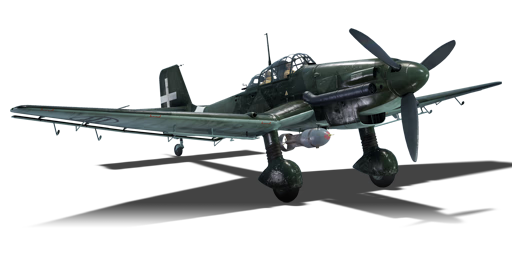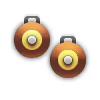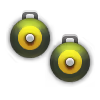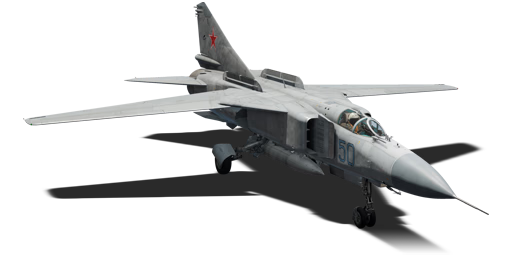




The Ju 87 D-3 (Italy) is a Italian dive bomber. It was introduced in Update 1.85 "Supersonic".
The Ju 87 D-3 (Italy) is a slow bomber when flying but decently fast in a dive. It is fairly durable for its battle rating, being able to take a decent amount of 7.7 mm and 12.7 mm fire before being fully disabled, but this doesn't mean you should fly in a straight line. The Stuka has a very low stall speed and is very manoeuvrable at lower speeds giving it an edge in a dive bomb run or a turn fight. The offensive and defensive armaments are a bit underwhelming, but can still heavily damage enemy aircraft in close proximity. In a dive attack, deploy the air brakes to control the acceleration so you don't gain too much speed and slam into the ground.
Its armament consists of two MG 17s mounted in the wings, very good for killing soft ground targets like armoured cars and AA, and has a good bomb load for destroying hard targets like tanks, pillboxes, ships and bases. Its defensive turret consists of two fast-firing MG 81s but they are not lethal enough to shoot down planes reliably.
flaps
flaps
flaps
brake
control
| Belt | Belt filling | Armor penetration (mm) at a distance: | |||||
|---|---|---|---|---|---|---|---|
| 10 m | 100 m | 500 m | 1000 m | 1500 m | 2000 m | ||
| AP-T/AP-I/AI | 9 | 8 | 6 | 3 | 0 | 0 | |
| AP-T/AP/AI/AP-I | 13 | 12 | 7 | 3 | 2 | 0 | |
| AP-T | 9 | 8 | 6 | 3 | 0 | 0 | |
| AI/AP/AP/AP/AI | 13 | 12 | 7 | 3 | 2 | 0 | |
| Belt | Belt filling | Armor penetration (mm) at a distance: | |||||
|---|---|---|---|---|---|---|---|
| 10 m | 100 m | 500 m | 1000 m | 1500 m | 2000 m | ||
| AP-T/Ball/Ball/AP-I/AI | 9 | 8 | 6 | 3 | 0 | 0 | |
| AP/AP/AP/AP-T | 13 | 12 | 7 | 3 | 2 | 0 | |
| AP-I/AP-T/AP-I/AP-T | 9 | 8 | 6 | 3 | 0 | 0 | |
| Name | Weight | Slot | ||||||
|---|---|---|---|---|---|---|---|---|
| 2 × | 116 kg |  |  | |||||
| 2 × | 200 kg |  |  | |||||
| 259 kg |  | |||||||
| 508 kg |  | |||||||












Flight performance | |
|---|---|
Weaponry | ||
|---|---|---|
